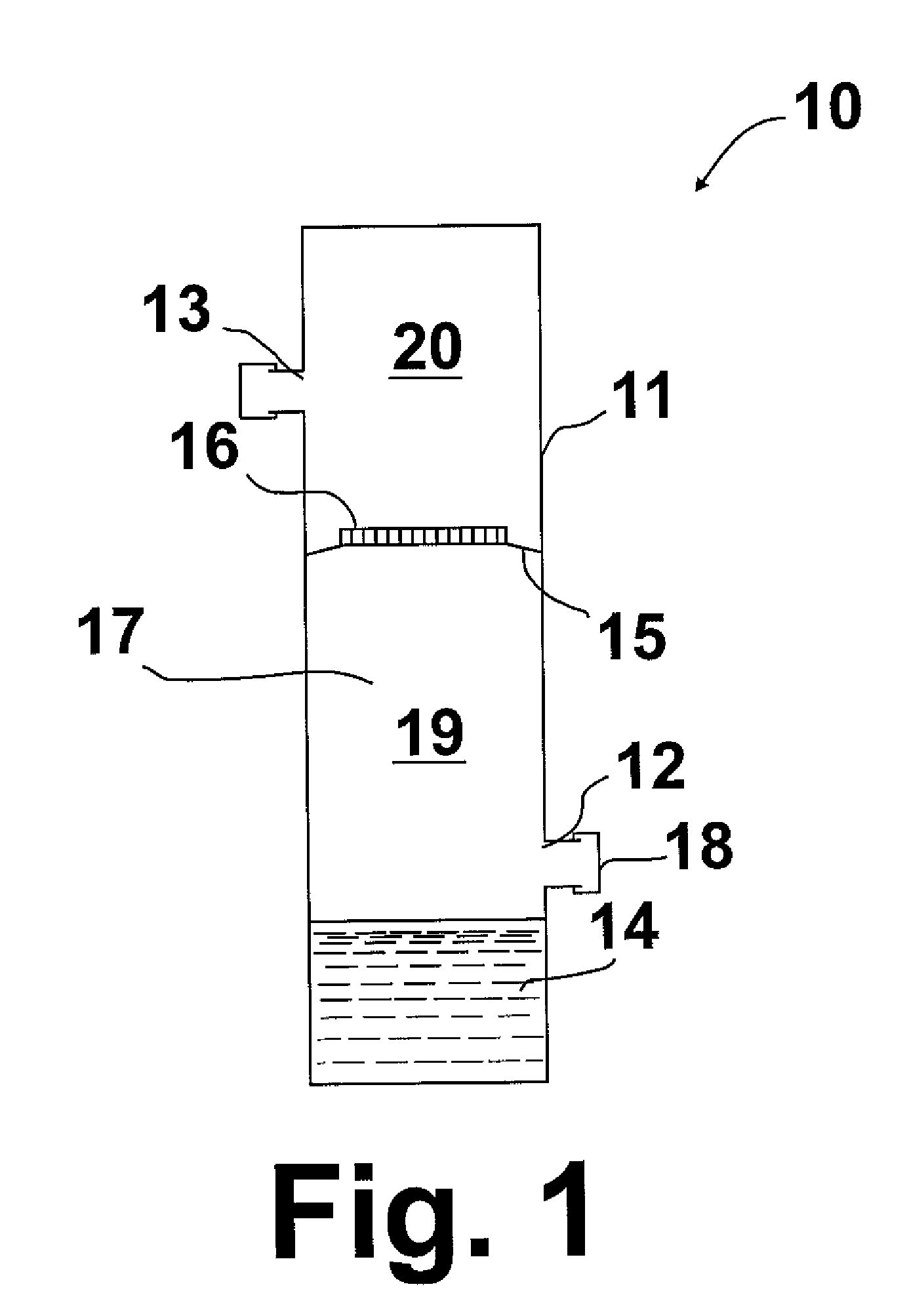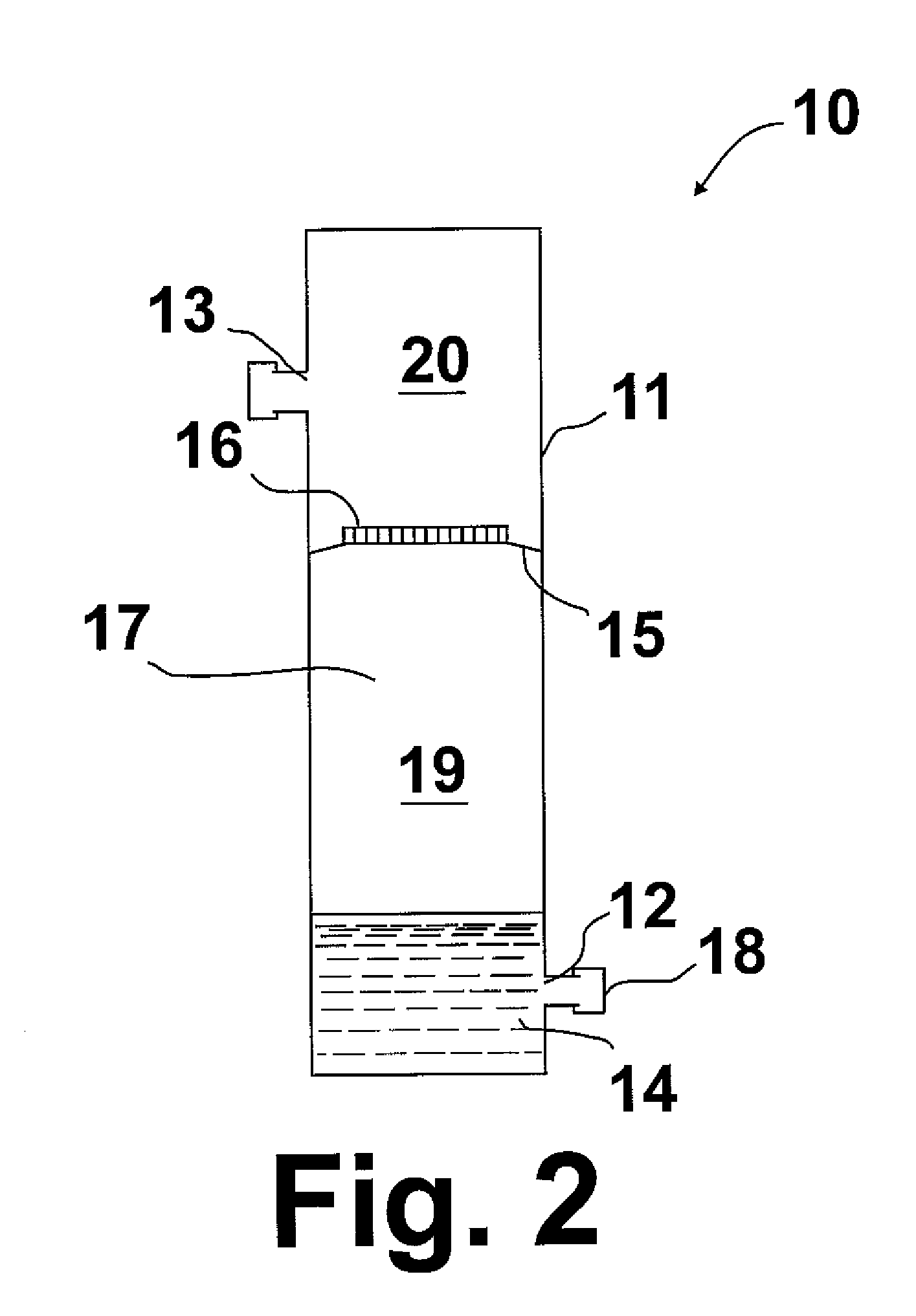Portable microbiological testing device for gases
a technology of microorganisms and gaseous streams, which is applied in the direction of biomass after-treatment, instruments, specific use bioreactors/fermenters, etc., can solve the problems of compromising the integrity and operation of gas utilization equipment and/or natural gas pipeline systems, posing hazards to human health, the environment and safety, and insufficient processing of biogas to contain trace or residual compounds, etc., to reduce false positives, minimize the chance of sample contamination, and improve the detection targ
- Summary
- Abstract
- Description
- Claims
- Application Information
AI Technical Summary
Benefits of technology
Problems solved by technology
Method used
Image
Examples
example 1
[0031]In this example, Clostridium acetobutylicum (ATCC 824) culture (pH 4.54) was washed with phosphate buffered saline (PBS, pH 7.0), and inoculated to PRD medium (orange) with a starting pH of 6.89. After two days of incubation at 37° C., the culture pH dropped to 5.24, and the culture was yellow in color with turbidity. The results were confirmed using three grown cultures prepared from 0.2 μm filters passed with raw biogas. The results indicated that PRD medium is appropriate for selective growth of APB in the samples, and the indicator (color change and turbidity) worked properly for the detection of APB in the samples. PRD medium shows significant color change when pH drops from approximately 6.7 to 6.1 or lower. The APB-containing environmental samples (e.g. biogas) reduce the medium pH to 5.3-6.1, which is enough to change the PRD medium color.
example 2
[0032]In this example, the tubular apparatus of this invention described herein above was tested with spiked natural gas. Comamonas denitrificans (ATCC 700936) and C. acetobutylicum were used as model microbes for general bacteria and APB, respectively. 400 L of natural gas were bubbled through the growth bacteria cultures and introduced through the gas sample inlet into the apparatus. The spiked bacteria in the aerosol were retained on the filter. After sampling, the medium compartment of filter units was added with 30 ml of corresponding media for general bacteria or APB. The units were incubated upside down at 37° C., aerobically for C. denitrificans and anaerobically for C. acetobutylicum. The indicating signs were observed in all units after two days of incubation, i.e turbidity in the general bacteria unit and color change plus turbidity in the APB unit. The results from this test indicated that 1) hydrophobic PTFE gas filters will not leak during incubation, and 2) indicators...
example 3
[0034]In this example, the apparatus of this invention was used for testing landfill biogas in the field. 15 ml of TGC medium containing 30 ppm of Antifoam 204 was added to the apparatus just prior to gas sampling. The average flow rate was maintained at 2.15 L / min during the sampling of 150 L of the landfill biogas. 30 ppm of Antifoam 204 in the TGC medium provided sufficient capacity to break the bubbles at a mark of 60 ml headspace of the apparatus. The apparatus was anaerobically incubated upside down at 37° C. After five (5) days, the culture turned turbid, indicating the apparatus successfully detected the presence of heterotrophic anaerobic bacteria in the cleaned landfill gas.
PUM
| Property | Measurement | Unit |
|---|---|---|
| diameter | aaaaa | aaaaa |
| pore size | aaaaa | aaaaa |
| pore size | aaaaa | aaaaa |
Abstract
Description
Claims
Application Information
 Login to View More
Login to View More - R&D
- Intellectual Property
- Life Sciences
- Materials
- Tech Scout
- Unparalleled Data Quality
- Higher Quality Content
- 60% Fewer Hallucinations
Browse by: Latest US Patents, China's latest patents, Technical Efficacy Thesaurus, Application Domain, Technology Topic, Popular Technical Reports.
© 2025 PatSnap. All rights reserved.Legal|Privacy policy|Modern Slavery Act Transparency Statement|Sitemap|About US| Contact US: help@patsnap.com


